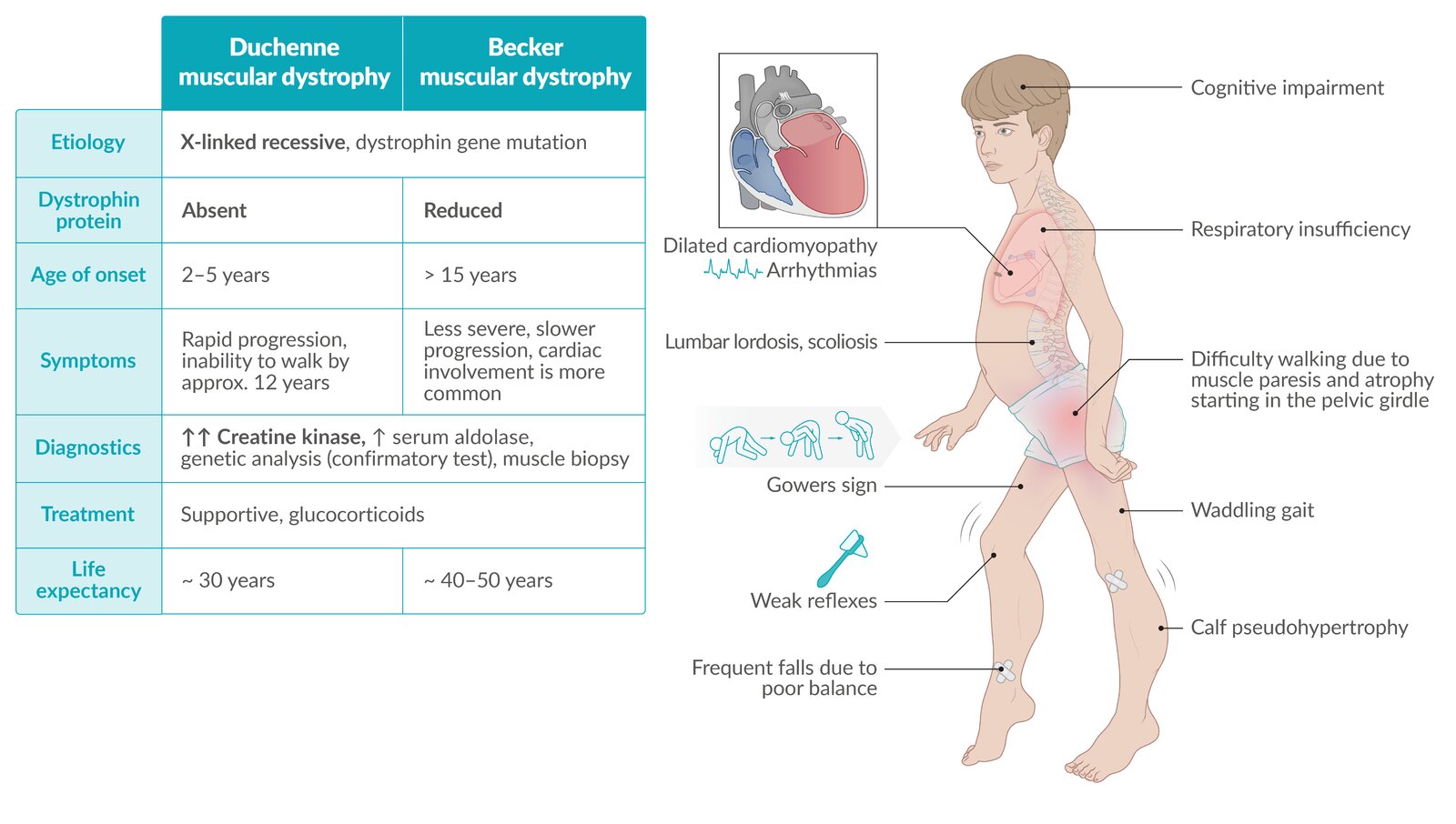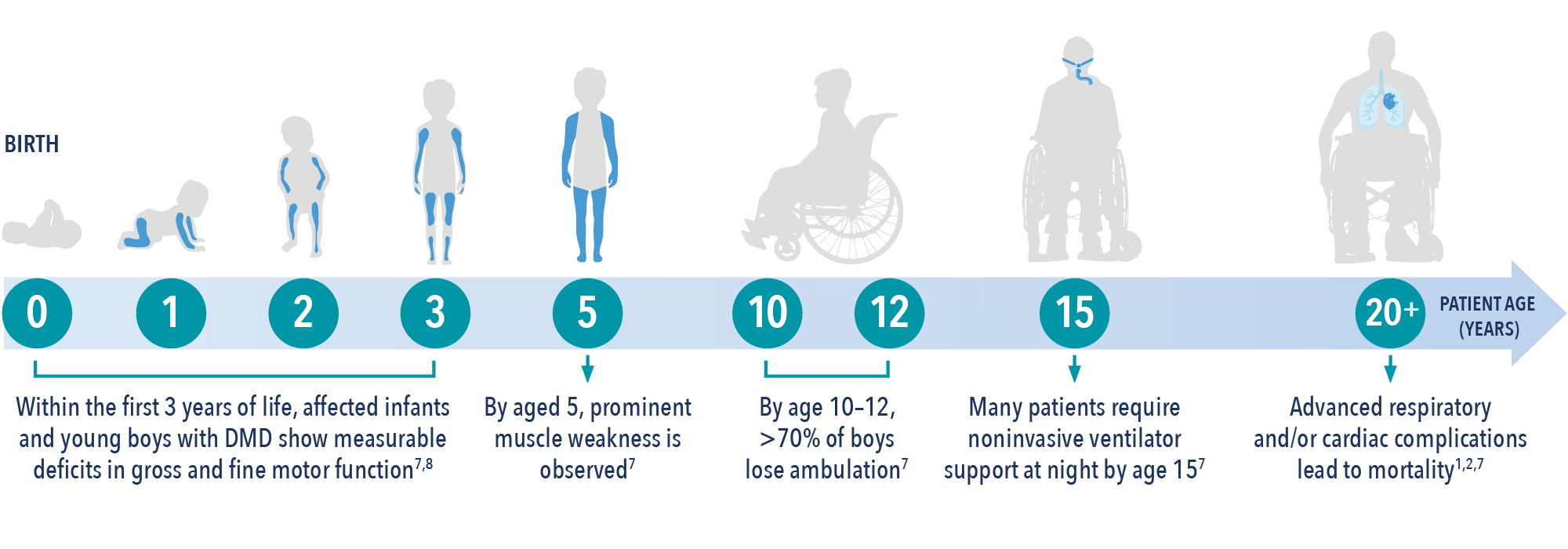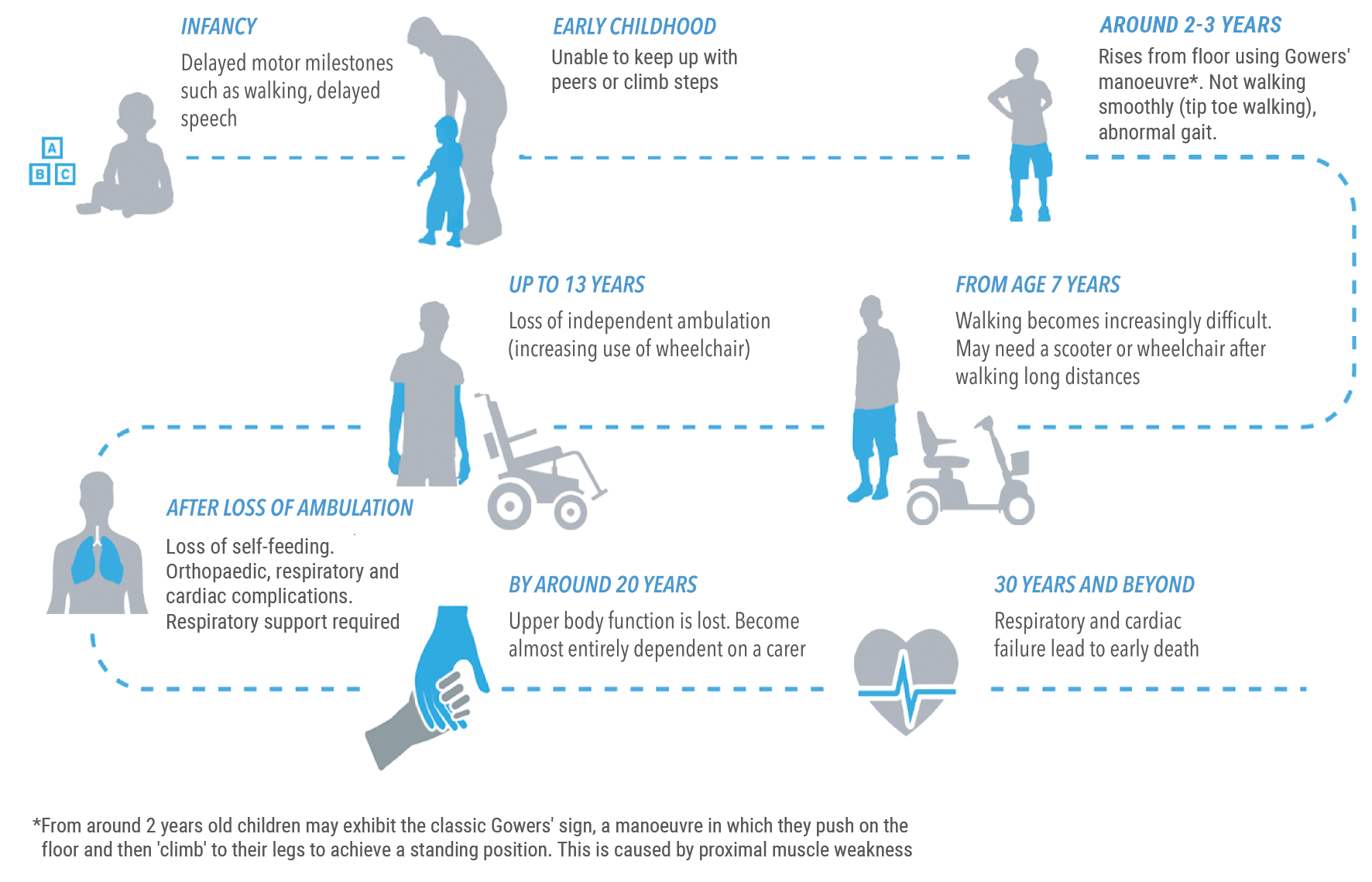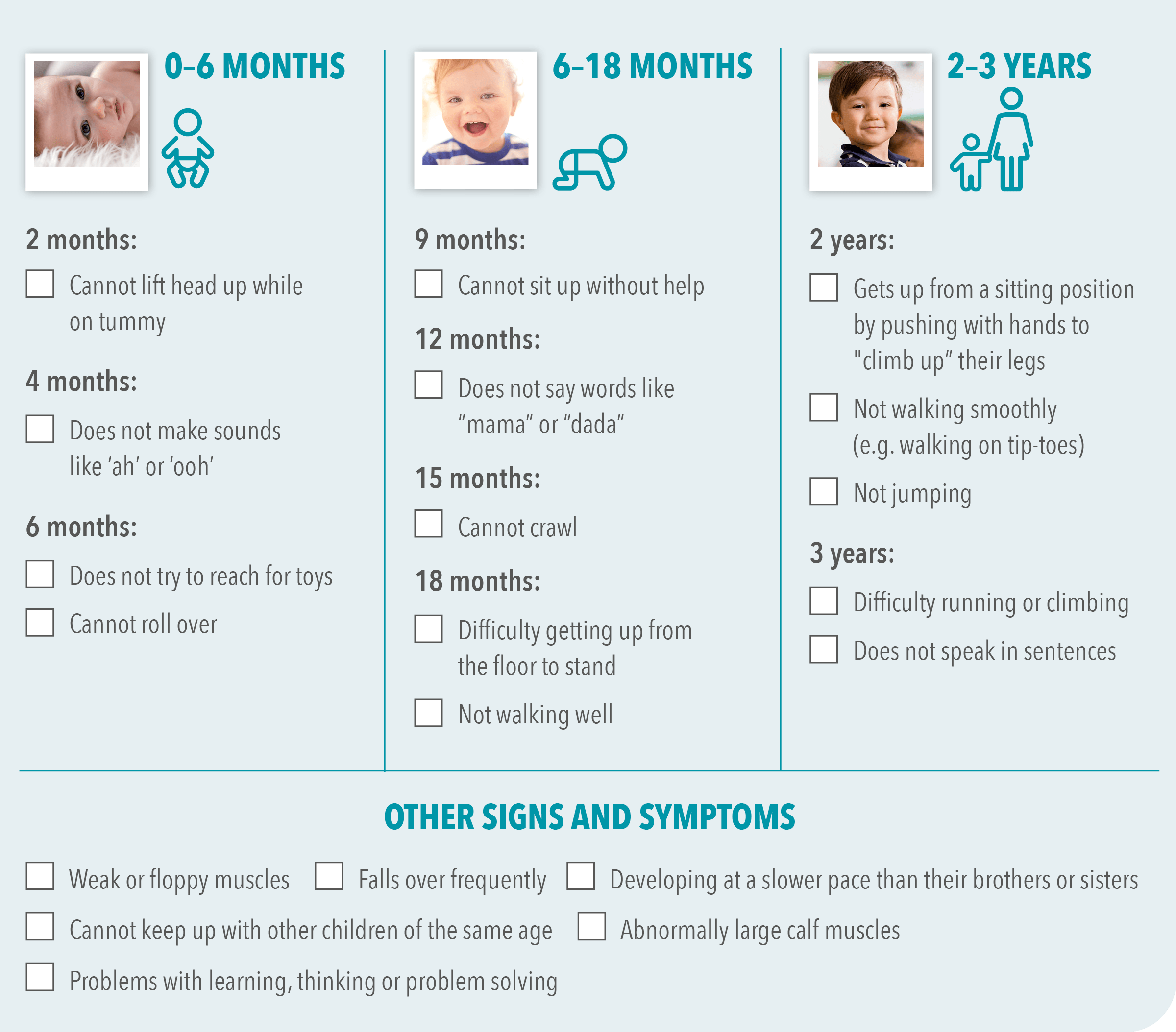
What is Duchenne muscular dystrophy?
Duchenne muscular dystrophy, or DMD, is a debilitating genetic condition that causes a gradual loss of muscle function that affects everyday movements and activities.
Muscular dystrophy is a condition that causes progressive wasting of the muscles. Duchenne muscular dystrophy is a particular type of muscular dystrophy caused by a mutation in the DMD gene. It affects more boys than girls.
The DMD gene helps produce a protein called dystrophin, which is important for muscle strength, support and repair. People with Duchenne muscular dystrophy don’t produce the normal form of dystrophin, which means their muscles are more easily damaged and don’t work properly.
The genetic mutation of the DMD gene is either inherited from parents or caused by a genetic change in the child.
What are the different types of muscular dystrophy?
There are many types of muscular dystrophy, with Duchenne muscular dystrophy being the most common in children.
Becker muscular dystrophy is very similar to Duchenne muscular dystrophy. It has the same underlying cause but is usually less severe, presenting with slightly different symptoms.
What are the signs of Duchenne muscular dystrophy?
The first thing parents usually notice is that their child isn’t reaching their motor (muscle movement) milestones. They might also notice that their child falls over often, is clumsy and walks on their toes.
Later, the child with Duchenne muscular dystrophy might develop:
- muscle weakness that affects their posture, walking and running
- reduced joint movement due to shortening of their muscles
- problems with their heart muscle, affecting heart function
- difficulty breathing as their muscle weakness worsens
How is Duchenne muscular dystrophy diagnosed?
Your doctor will talk to you and examine your child. If the doctor suspects a problem like Duchenne muscular dystrophy, your child might have blood tests and genetic tests.
Blood tests look for elevated levels of the enzyme creatine kinase. This test can give a guide, but not a certain diagnosis.
A genetic test for the DMD gene is the best way to diagnose DMD.
If genetic tests are unclear, as they sometimes are, your child might need a muscle biopsy to check for dystrophin in the muscle.
Duchenne muscular dystrophy is usually diagnosed between 3 and 7 years of age.
Living with Duchenne muscular dystrophy
There is no cure for Duchenne muscular dystrophy, so treatment aims to manage symptoms and improve quality of life.
A neurologist usually oversees treatment, working with a range of different health professionals including physiotherapists, podiatrists, speech pathologists and psychologists.
Common treatments include stretching and exercising muscles, and wearing splints and orthotics for support. Counselling can also help with any issues that arise.
Steroids can be used to try and slow the progression of Duchenne muscular dystrophy, although these may have side effects.






